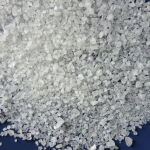Last Updated on August 26, 2021
A water softener is a great addition to any home with hard water, but when it’s not installed properly, it can lead to many complications. Water softener installation is typically best when done by a professional. If you’re interested in knowing the process, here is an overview. Keep in mind that you should always follow the manufacturer’s instructions and local plumbing code.
What You Need to Know Before Installing a Water Softener
Before even starting the installation process, there are several things you need to know. You must have some plumbing skills, such as knowing how to solder and how to properly connect different plumbing materials. You also need to know the incoming water quality. For municipal water, this is mostly how hard your water is and chlorine or chloramine levels. You can either use a test kit or check your municipality’s annual water quality report. For private well owners, you need to know how hard your water is, the pH, iron levels and any other contaminants that may be in your water. You’ll need to send a sample of your water to a state-certified laboratory for an analysis. Lastly, you need to be familiar with your local plumbing code to ensure your water softener is installed properly.
How to Install a Water Softener
The first thing you need to do when installing a water softener is pick the right location. To make things simple and keep costs down, you want to install it as close to your water main as possible. Ideally it will be conveniently located for running a drain line and connecting to a power outlet. The most important thing is to plumb it in at the right spot in your plumbing, isolating areas you don’t want to treat.
Once you’ve selected the location, you need to drain the plumbing system and cut into the main water line. Look at the manufacturer’s instructions for how much of the main line you need to cut. Then, you need to connect it to the existing plumbing, paying attention to local plumbing code.
After connecting to the plumbing, you have to run the drain line. This can be run to a floor drain or a utility sink. Make sure once again to follow local plumbing code. Then, you need to level and place the backflush tank in a location where you can easily access it to refill it as needed. When you have it in the proper place, you’ll need to set up the brine valve assembly and connect it to the media tank.
Sound complicated? Contact your local Puronics Authorized Dealer for help.
Once you have the backflush tank all set up, you need to hook the system up to an electrical outlet. If there isn’t a conveniently located outlet, you may need to have a power supply run to a remote location. After connecting the system to electricity, you need to adjust the settings. This is when you need to know the hardness of the incoming water. Follow the manufacturer’s instructions for set up and adjust the default settings as needed.
When you’ve finished setting up the system, you need to flush it according to the manufacturer’s instructions. The last step is adding water softener salt (sodium chloride or potassium chloride) to the backflush tank.
What to Watch out for When Installing a Water Softener
There are some common issues you may encounter when installing a water softener. You have to make sure you get the flow direction right. If you don’t, you’ll have no water flow to your home. You also need to carefully implement the start-up procedure according to the manufacturer’s instructions. If done incorrectly, you can clog the head or lose media down the drain.
Probably the most common problem is inputting the wrong settings or not changing the default ones. This is why it is so important to know your incoming water quality. If you have the hardness set too high, the system will regenerate more frequently than necessary, and you’ll waste water and salt, making it very inefficient. If you have the hardness set too low, the softener won’t regenerate often enough, so you’ll still experience hard water.
The worst thing that can happen when installing a water softener is the media gets pumped into your home. It clogs up aerators, gets into your hot water tank or clogs up your tankless water heater, clogs up toilets and just causes a huge mess. After cleaning up all the media, you then need to replace it.
Even professional plumbers with decades of experience can run into issues when installing water softeners. However, by hiring a professional, you can ensure that the water softener is plumbed in correctly, set up properly, looks good and is done to code.
Our local Authorized Dealers use professional technicians to install all our water treatment systems. Installation is often included with the purchase of your Puronics water softener system. Use our dealer locator to find the one nearest you, and contact them to schedule your free water consultation.
© 2020 Puronics All Rights Reserved

 Puronics, Incorporated
Puronics, Incorporated



